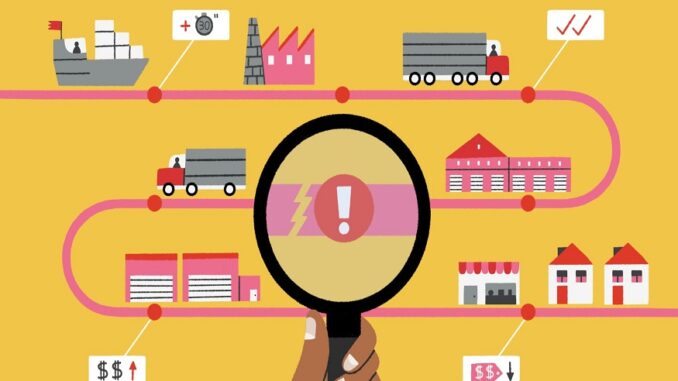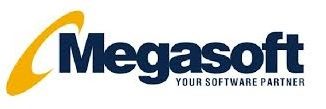
Freight forwarding is an essential aspect of the global trade industry, connecting businesses with suppliers, customers, and markets worldwide. In today’s dynamic and complex supply chain environment, freight forwarding software has become a vital tool for managing transportation, logistics, and regulatory compliance. According to a recent report by Market Research Future, the global freight forwarding software market is expected to grow by a compound annual growth rate (CAGR) of 10.4% from 2020 to 2027.
Freight forwarding software solutions vary in their capabilities, ranging from basic management tools to comprehensive freight solutions that integrate with various carrier systems, provide real-time visibility, and automate document generation and management. The importance of such software solutions cannot be overstated, as they enable shippers to optimize their supply chains, reduce costs, and enhance customer service.
However, it is essential to understand the difference between a management tool and a comprehensive freight solution software. While management tools can help shippers manage their transportation and logistics operations, they may lack the advanced features and integrations necessary for true end-to-end supply chain optimization.
This blog post will explore the importance of freight forwarding software, the benefits of transitioning from a management tool to a comprehensive freight solution, and the key features and challenges of adopting such solutions. We will draw on recent studies, industry reports, and expert insights to provide a comprehensive overview of this essential technology in the freight forwarding industry.
Understanding the difference between management tools and freight solution software
While both management tools and freight solution software aim to streamline shipping processes, the main difference lies in their capabilities. Management tools are often limited in their functionality, providing basic transportation management features such as booking and tracking shipments. In contrast, freight solution software offers a comprehensive suite of features that can integrate with different carrier systems and provide real-time visibility across the entire supply chain. This integration enables shippers to optimize their supply chain, improve delivery times, and reduce costs.
Limitations of management tools
Although management tools can help shippers manage transportation and logistics operations, they have limitations in terms of functionality and integration. They often lack advanced analytics and reporting capabilities, making it difficult for shippers to analyze their supply chain data and make informed decisions. Additionally, management tools may not integrate with all carriers, limiting visibility across the entire supply chain. This lack of integration can result in data silos, which can hinder supply chain optimization.
Features of freight solution software
Freight solution software offers a wide range of features that can help shippers streamline shipping processes and optimize their supply chains. These features include automated document generation and management, which can reduce manual data entry and minimize errors. Freight solution software also offers advanced analytics and reporting capabilities, which enable shippers to analyze their supply chain data and make informed decisions. Additionally, freight solution software can integrate with different carriers and systems, providing real-time visibility across the entire supply chain. This integration can enhance supply chain optimization and reduce costs by enabling shippers to identify bottlenecks and inefficiencies.
What are the benefits of freight forwarding software?
1- Streamlined Shipping Processes
Freight solution software can streamline shipping processes by automating tasks such as order processing, shipment scheduling, and carrier selection. This automation saves time and reduces the likelihood of errors that can lead to delays or lost shipments. By using a single platform to manage all of your shipping needs, you can reduce the amount of time spent on manual tasks and focus on other critical areas of your business. Additionally, freight solution software can provide access to real-time data, enabling you to make informed decisions about shipping and logistics.
2- Improved Visibility and Tracking
Freight solution software offers improved visibility and tracking for shipments. With this software, you can monitor the progress of your shipments from start to finish and receive alerts if there are any issues or delays. This level of visibility enables you to keep your customers informed about the status of their shipments and provide proactive communication if there are any problems. Improved visibility and tracking can also help you identify inefficiencies in your shipping processes and make changes to optimize your operations.
3- Cost Reduction
Freight solution software can help reduce costs associated with shipping and logistics. By automating tasks and providing real-time data, you can make informed decisions about carrier selection, shipping routes, and delivery times. This information can help you negotiate better rates with carriers, reduce the likelihood of lost or damaged shipments, and avoid costly mistakes. Additionally, freight solution software can help you identify areas where you may be overspending on shipping, such as expedited or premium services, and make changes to reduce costs.
4- Enhanced Customer Service
Freight solution software can enhance your customer service by providing real-time tracking information and proactive communication. With this software, you can provide customers with accurate and up-to-date information about their shipments, including estimated delivery times and any issues that may arise. This level of transparency and communication can help build trust and loyalty with your customers. Additionally, freight solution software can help you quickly resolve any issues that may arise, such as lost or damaged shipments, and provide timely updates to your customers.
5- Competitive Advantage
By using freight solution software, you can gain a competitive advantage in your industry. This software enables you to optimize your shipping processes, reduce costs, and provide superior customer service. By offering faster, more reliable shipping and accurate tracking information, you can differentiate yourself from your competitors and attract and retain more customers. Additionally, freight solution software can help you identify new opportunities for growth and expansion, such as expanding your shipping capabilities to new regions or offering new services to your customers.
What are the key features of freight management software?
1- Automated document generation and management
One of the key features of freight solution software is the ability to automate the generation and management of documents such as bills of lading, commercial invoices, and packing lists. This automation can save time and reduce the likelihood of errors that can lead to delays or fines. Additionally, freight solution software can store all of your shipping documents in a single platform, making it easy to access and share information with others in your organization or with external partners.
2- Integration with different systems and carriers
Another key feature of freight solution software is the ability to integrate with different systems and carriers. This integration can provide access to real-time data and enable you to manage all of your shipping needs in a single platform. With integration, you can quickly compare rates and services from different carriers, select the best option for your needs, and generate shipping labels and documentation. Integration can also help you automate tasks such as order processing and tracking, reducing the amount of time spent on manual tasks.
3- Advanced analytics and reporting
Freight solution software often includes advanced analytics and reporting capabilities that enable you to make informed decisions about your shipping operations. With this software, you can generate reports on shipping volumes, carrier performance, and costs. This information can help you identify inefficiencies and opportunities for improvement, such as optimizing your shipping routes or negotiating better rates with carriers. Additionally, advanced analytics and reporting can help you track key performance indicators (KPIs) and measure the success of your shipping operations.
4- Compliance and regulations
Freight solution software can help you stay compliant with regulations and industry standards. This software can provide access to the latest regulatory requirements and help you ensure that your shipments meet all necessary standards. Additionally, freight solution software can generate the necessary documentation and labels to ensure that your shipments comply with all regulations. By staying compliant with regulations, you can avoid fines and other penalties, as well as maintain your reputation as a reliable and trustworthy shipping partner.
What are the main challenges of adopting an online freight forwarding system?
1- Resistance to change
One of the main challenges of adopting freight solution software is resistance to change. Employees may be hesitant to switch to a new system and may prefer to continue using existing processes and tools. To address this challenge, it is important to involve employees in the adoption process and communicate the benefits of the new software. Providing training and support can also help employees feel more comfortable with the new system and reduce their resistance to change.
2- Training and implementation
Another challenge of adopting freight solution software is training and implementation. Implementing a new software system can be time-consuming and requires proper planning and coordination. It is important to allocate sufficient time and resources to training employees on the new system and ensuring that they understand how to use it effectively. Additionally, it is important to have a clear implementation plan in place, with defined timelines and milestones, to ensure a smooth transition to the new system.
3- Cost of implementation
The cost of implementation is another challenge of adopting freight solution software. While the software can provide significant cost savings over time, there may be upfront costs associated with licensing, hardware, and training. It is important to conduct a thorough cost-benefit analysis to determine the potential return on investment and ensure that the cost of implementation aligns with the benefits that the software can provide. Additionally, it may be possible to negotiate pricing and payment terms with the software vendor to reduce upfront costs.
4- Integration with existing systems
Another challenge of adopting freight solution software is integration with existing systems. Many companies have complex IT environments with multiple systems and tools in use. It is important to ensure that the new software can integrate with existing systems and tools to avoid disruption to other business processes. This may require customization or development work to ensure compatibility and smooth integration. Additionally, it is important to consider the impact of the new software on existing workflows and processes and make any necessary adjustments to ensure a seamless transition.
In conclusion, adopting freight solution software can bring significant benefits to your business. From streamlined shipping processes and improved visibility and tracking to cost reduction and enhanced customer service, the advantages of using this software are clear. Additionally, key features such as automated document generation and management, integration with different systems and carriers, advanced analytics and reporting, and compliance and regulations can further optimize your shipping operations.
Despite the challenges of adopting freight solution software, including resistance to change, training and implementation, cost, and integration with existing systems, the benefits of using this software far outweigh the drawbacks. It is important to involve employees in the adoption process, provide training and support, and conduct a thorough cost-benefit analysis to ensure a successful implementation.
Looking to the future, technology will continue to play an increasingly important role in freight forwarding. From artificial intelligence and machine learning to blockchain and the Internet of Things, new technologies will further enhance the efficiency and effectiveness of shipping operations. By staying ahead of the curve and embracing new technologies, businesses can gain a competitive advantage and position themselves for success in the rapidly evolving world of freight forwarding. So, don’t wait any longer, start considering the adoption of freight solution software to transform your shipping operations and stay ahead of the competition.
Logitude World provides freight forwarders with advanced freight forwarding software to manage all operations on one digital platform and deliver superior freight services.
LinkedIn: https://www.linkedin.com/company/logitudeworld/

Leave a Reply
You must be logged in to post a comment.